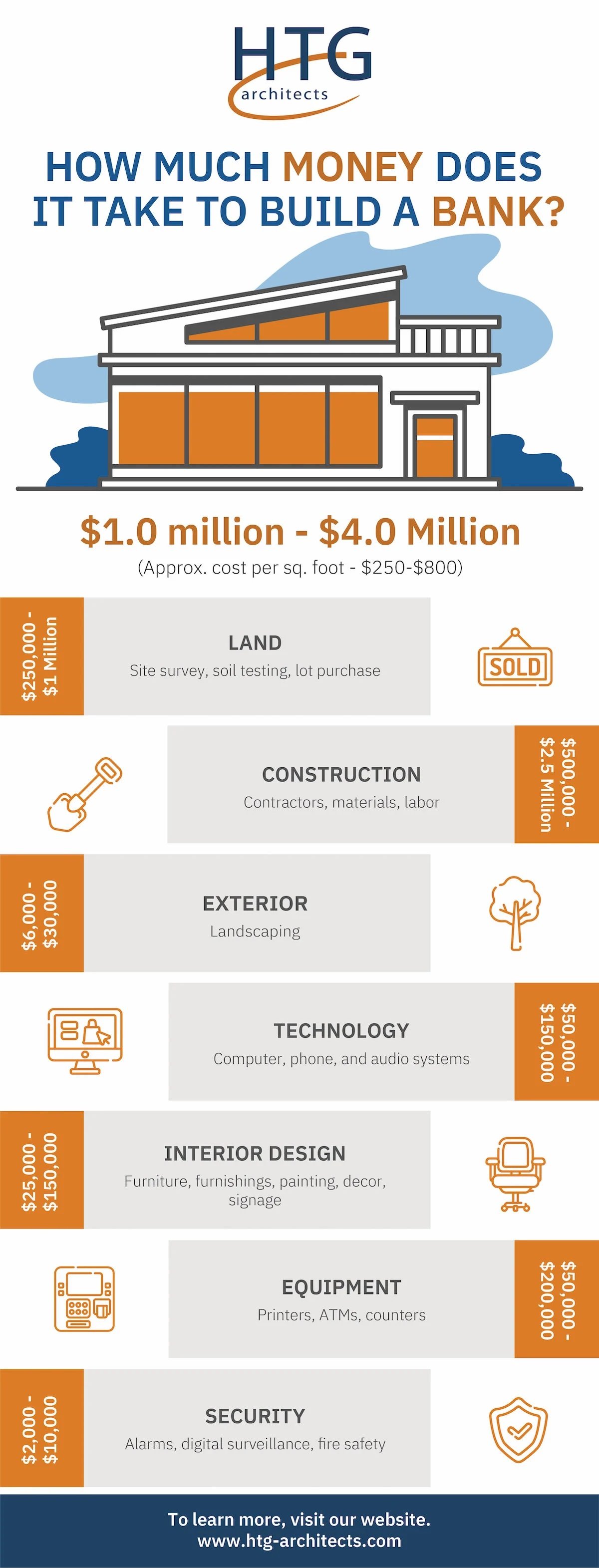How the Cost of Building a Bank Has Changed
Over the last decade, many financial industry members have noticed a trend in the cost of building new banks and credit unions. Despite a growing number of banks downsizing physical spaces due to digital banking technology, costs for building new branches are still climbing. This begs the question — what accounts for the rise in overall cost if space is being scaled back?
Let’s look at how prices are stacking up in 2022 and what some potential causes may be.
The Average Cost of Building a Bank Prior to 2022
Obviously, many factors go into calculating the overall cost of building a bank. Most notably, the physical size of the branch itself and the plot of land that houses it. Before 2022, the average final “sticker price” ranged in the neighborhood of $1–4 million, with an average cost per square foot ranging from $425 to $450.
Here is a breakdown of the most common factors included in the price:
Factors Impacting the Cost of Building a Bank in 2022
So, what’s changed within the last year? For starters, costs are up 30–40% across the board from 2021 alone. We’re seeing a steady price of about $500–600 per square foot, which is a sizable jump from the typical price per square foot in previous years.
In any event, calculating the final cost of a bank in 2022 requires accounting for several additional cost factors, including lead times, material selection, seasonality, and labor.
Lead Times and Material Selection
Lead times and material selection are causing major headaches when it comes to new bank construction. Tight supply chain restrictions on everything from manufacturing materials to interior furnishings are causing backups that spike prices. Chances are if you need something, you’d better be willing to pay excessive surge charges and expect delays. Material and product pricing used to be reliable for 30–60 days. Now it’s typically relevant for 24 hours before prices jump again.
Seasonality
Compile long lead times with the limited construction season in the Midwest, and you’re looking at even more delays. Many firms are just starting to get back on track with projects slated to begin before the pandemic in 2020, putting pressure on an already backed-up workflow that operates within a limited time frame.
Labor
The price of labor required to build banking infrastructure has also increased. Most contractors we work with are having a tough time finding the staff to help them take on new projects, which drives up the prices of their efforts. Compensating employees to work longer hours under tighter deadlines is no easy feat, and that impact is hitting the pocketbooks of many banks looking to expand their footprint.
When is the Right Time to Build a New Bank?
The short answer? Despite everything we’ve described, there’s no better time than the present. Costs are always considered a challenge, but the fact is that high costs aren't stopping anyone.
Our advice to anyone in the banking industry looking to grow their brand’s presence is to remember that the current market is only a snapshot of time. Staying true to your plan is essential — remember it’s a marathon, not a sprint. Material costs shouldn't deter you if you’re genuinely positioned on a growth strategy.
If your goal is to grow your presence in a new market, you can accomplish that with the right partner who has experience finding creative ways to build or remodel without breaking your budget. We’ve helped hundreds of banks plan for the future by putting in the time to plan a well-thought-out growth strategy. Through site selection, programming sessions, feasibility studies, and architecture and engineering, our process takes the pressure off and opens the doors to new opportunities. Financial institutions that want to expand can and will find a way to do it, and we’re always here to help.


